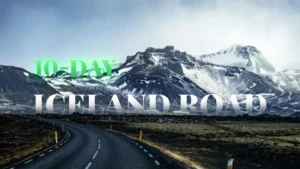Do you ever dream about going to another planet?
Though cross-planet travel isn’t possible yet,there are places right here on Earth that feel like they belong to another world entirely. From glowing caves that mimic the stars to volcanoes that breathe blue fire, these destinations will leave you questioning reality.
Here I found six alien-like places that absolutely blew my mind. These are not your typical travel spots. They’re surreal. They’re the kind of places that make you stop and ask: Are we still on Earth?
Whether you’re a curious traveler, a thrill-seeker, or just someone who wants to see something completely different, this list will teleport you to the most bizarre and beautiful places on the planet—no spaceship required.
1. Socotra Island, Yemen – A Portal to Earth’s Biodiversity and Ecological Study
Imagine walking through a forest where trees look umbrellas and flowers grow in the strangest shapes you’ve ever seen. Welcome to Socotra Island, a remote and rugged island in the Arabian Sea, often called the most alien-looking place on Earth.

Its iconic Dragon’s Blood Trees, with thick trunks and umbrella-like canopies, make you feel like you’ve landed on another planet. About a third of the island’s plant life exists nowhere else in the world, which gives Socotra its bizarre, untouched beauty. You’ll find pink sand beaches, crystal lagoons, and landscapes that you can’t help but fall in love with.
Best for: Adventurous travelers, rare photographers, and fans of nature’s weird side.
What to know before you go:
Visa and Travel Arrangements: All tourists need a Yemeni visa to visit Socotra Island. Tour operators often handle the visa application process, which typically takes a few days.
Limited Flights: Flights to Socotra are limited, often departing from Abu Dhabi. It’s essential to book well in advance due to the limited number of seats available.
Basic Amenities: Accommodations are minimal, often consisting of tents or guesthouses. There are no ATMs, and shops are scarce, so bring necessary supplies, including cash, medications, and power banks.
Best Time to Visit: October to March, to avoid monsoon winds and extreme heat.
2. Waitomo Glowworm Caves, New Zealand – An Enchanting Destination for Romantic Travel
Step into the darkness and look up—you’ll see what looks like the Milky Way stretching across the ceiling. But you’re not in space. You’re deep inside the Waitomo Caves in New Zealand, lit by thousands of tiny glowworms.
This is magical. The silence, the gentle boat ride, and eerie blue light make you feel like you’ve left Earth entirely. It’s nature’s own cosmic stardust.
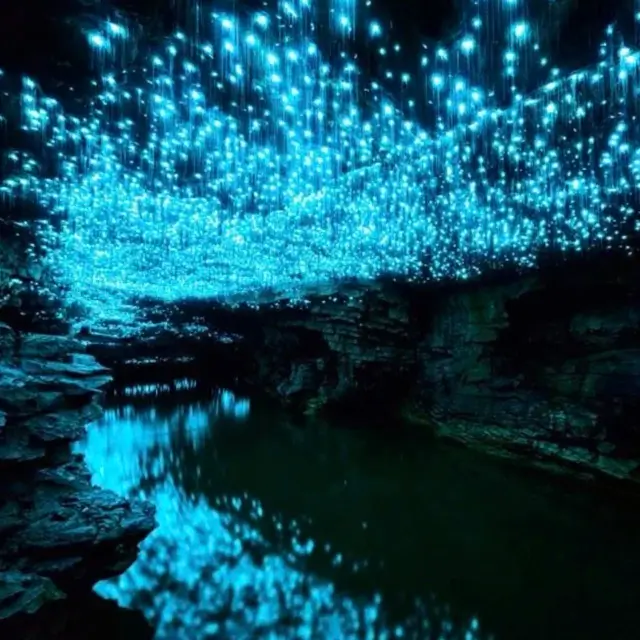
Best for: Romantic Travel, dreamers
What to know before you go:
Pre-Booking is Essential: Tours are popular and can fill up quickly. It’s recommended to book in advance to secure your spot,or you could always ask a guide.
Tour Options: Visitors can choose between calm boat rides through the Glowworm Grotto or more adventurous black-water rafting experiences.
Photography Restrictions: Flash photography is not allowed inside the caves to protect the glowworms.
Dress Appropriately: The caves maintain a cool temperature year-round, so bring a jacket even during summer months.
Best Time to Visit: Year-round, with fewer crowds from May to September.
3. Kawah Ijen Volcano, East Java, Indonesia – An Extreme Night Trek for Adventure
There’s a mountain that breathes blue fire,which sounds like something in a film, right? But it’s very real—and it’s in East Java, Indonesia.

The Kawah Ijen Volcano is home to one of Earth’s rarest natural phenomena: electric-blue flames caused by ignited sulfuric gases. At night, the crater glows in a way that’s both hypnotic and haunting. By day, the landscape looks like a post-apocalyptic sci-fi scene—complete with toxic smoke, sulfur miners, and an acidic turquoise lake.
Best for: Explorers, night photographers
What to know before you go:
Night Hikes: The blue flames are visible only in darkness, so hikes typically start around midnight.
Safety Gear: Toxic sulfur gases are present; wearing a gas mask is essential. Reputable guides provide proper masks, and rentals are available at the start of the hike.
Challenging Trek: The hike is steep and can be slippery. Proper hiking shoes and a good headlamp are recommended.
Health Considerations: Individuals with respiratory issues should exercise caution or consider viewing the crater from above.
4. Fly Geyser, Nevada, USA – A Geothermal Oddity for Earth Science and Color Field Photography
In the middle of the Nevada desert, something weird and wonderful is erupting—not naturally, but accidentally.
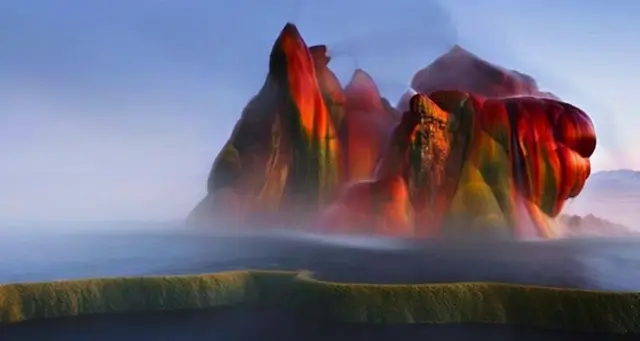
Meet the Fly Geyser, a multicolored formation that looks like an alien spaceship landed in the desert and decided to stay. Formed after geothermal drilling in the 1960s, minerals and algae now paint the geyser in neon reds, greens, and yellows, and boiling water still shoots out regularly.
It’s weird. It’s vibrant. It’s like Earth tried to cosplay Mars—and nailed it.
Best for: Road trippers, Instagrammers, and fans of technicolor landscapes.
What to know before you go:
Private Property: Fly Geyser is located on private land and is not open to the public without a pre-arranged tour.
Guided Tours: Access is available through guided nature walks, typically offered on select Saturdays in spring, summer, and fall.
Preparation: Bring sunscreen, water, and a hat, especially during warmer months.
Photography: The geyser offers stunning visuals; a good camera with a wide-angle lens is recommended.
Best Time to Visit: Spring and fall, to avoid extreme heat.
5. Kīlauea Volcano, Hawaii, USA – Earth’s Fiery Heartbeat
When I first saw a video of molten lava pouring into the ocean, I didn’t believe it was real. But that’s exactly what happens at Kīlauea, one of the world’s most active volcanoes.
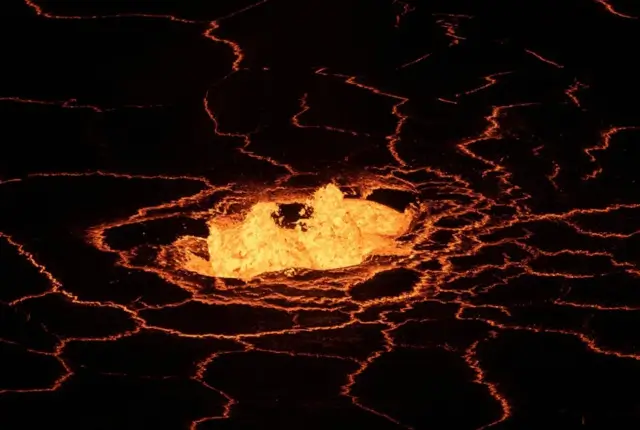
On Hawaii’s Big Island, you can walk hardened lava fields as steam rises beneath your feet, and if lucky, see glowing lava flow at night. It’s like standing on a living, breathing planet.
Best for: Volcano lovers, thrill seekers, and anyone who wants to witness Earth in motion.
What to know before you go:
Eruption Status: Kīlauea is an active volcano. Check the U.S. Geological Survey (USGS) website for current eruption updates before planning your visit.
Visitor Facilities: Hawaii, Volcanoes National Park offers developed facilities, including hiking trails, visitor centers, and guided tours.
Cultural Respect: The volcano is considered sacred in Hawaiian culture. Visitors should stay on marked trails and respect local customs.
Weather Variability: Weather conditions can change rapidly; bring layers to accommodate varying temperatures.
Best Time to Visit: Year-round, with the most dramatic views during active lava periods.
6. Zhangjiajie Forest Park, China – A Cinematic Landscape
James Cameron was inspired by this place when creating the floating mountains of Avatar. And when you visit Zhangjiajie Forest Park, it’s not hard to see why.
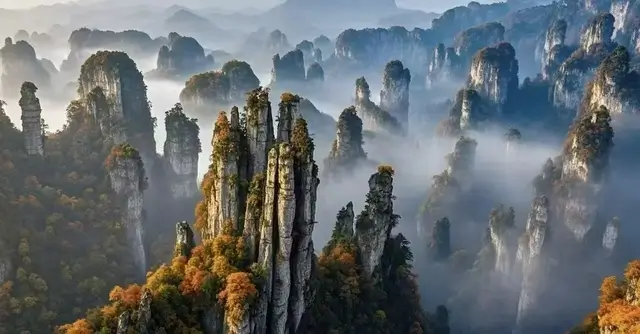
This UNESCO World Heritage site is famous for its towering sandstone pillars that pierce the mist and clouds. When the fog rolls in, it really looks like the mountains are floating. It’s haunting, peaceful, and totally surreal.
Best for: Fantasy lovers, and fans of the movie Avatar.
What to know before you go:
Extensive Walking: The park is vast, with numerous trails, glass bridges, and scenic elevators. Prepare for significant walking.
Weather Considerations: The weather can be unpredictable; bring rain gear and be prepared for fog, which often enhances the surreal views.
Must-See Attractions: Don’t miss the Bailong Elevator, the world’s tallest outdoor elevator, offering panoramic views of the sandstone pillars.
Transportation Within the Park: Shuttle buses are available and included with entry, helping to save time and energy.
Best Time to Visit: September to November, for cooler weather and clearer skies.
Final Thoughts:
Earth Is Way Stranger Than We Think.If you’ve ever dreamed of exploring other planets, just remember: Earth still has plenty of alien-like places that can surprise even the most jaded traveler. These six destinations told us that our planet is full of mystery, beauty, and straight-up weirdness.
So the next time you need to escape the ordinary, you don’t need a spaceship—just a passport and a little curiosity.



